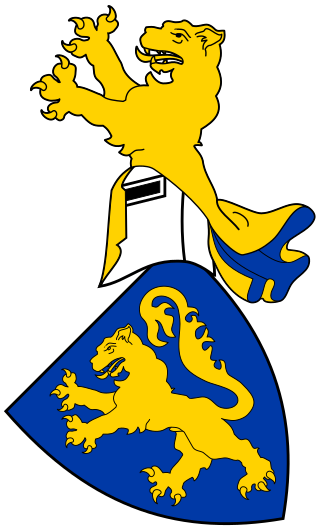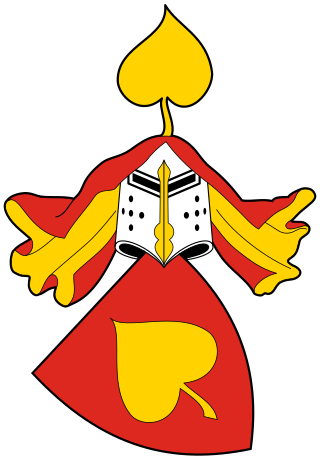Related Research Articles

Csák was the name of a gens in the Kingdom of Hungary.

Győr was the name of a gens in the Kingdom of Hungary. The ancestor of the kindred was a German knight, who arrived to Hungary in the first half of the 11th century. His descendants settled down in Transdanubia. The last scion of the family died in the 17th century.

Rátót was the name of a gens in the Kingdom of Hungary. According to Simon of Kéza and other chroniclers, the ancestors of the clan were Italians from Caserta, Naples, by name Rathold and Oliver, who settled down in Hungary around 1097 during the reign of Coloman, King of Hungary. They came to Hungary alongside Felicia of Sicily.
Henry I (c.1200–1252) was the hereditary Count of Vianden from 1210 and, through his wife, Marquis of Namur from 1229.
Atyusz was the name of a gens in the Kingdom of Hungary, several prominent secular dignitaries came from this kindred.
Nicholas (III) from the kindred Monoszló was a Hungarian baron, who served as Judge royal between 1270 and 1272, during the reign of Stephen V.
Macarius (I) from the kindred Monoszló was a Hungarian noble, the first known member of the gens Monoszló.
Thomas (I) from the kindred Monoszló was a Hungarian noble, who served as Ban of Slavonia from 1228 to 1229.
Gregory (II) from the kindred Monoszló was a Hungarian noble, who served as ispán of Krassó County in 1255.
Egidius (II) from the kindred Monoszló was a Hungarian powerful baron, who served as Master of the treasury from 1270 to 1272 and from 1274 to 1275. He was a loyal supporter of Stephen V of Hungary from his ducal years.
Gregory (III) from the kindred Monoszló was a Hungarian lord, who served as the first known Judge of the Cumans in 1269. Through his marriage, he was a relative of the royal Árpád dynasty.
Peter (II) from the kindred Monoszló was a Hungarian prelate, who served as the Bishop of Transylvania from 1270 until his death. The current St. Michael's Cathedral in Gyulafehérvár was built during his term.

Hahót or Hahót–Buzád was the name of a gens in the Kingdom of Hungary, several prominent secular dignitaries came from this kindred. The last noble family, which originated from the kindred, became extinct in 1849.
Péc or Pécz was the name of a gens in the Kingdom of Hungary. The powerful and illustrious Marcali and Apponyi noble families descended from this kindred. The clan had large-scale possessions in several counties of Transdanubia, in addition to Slavonia and other parts of the Kingdom of Hungary.

Héder was the name of a gens in the Kingdom of Hungary, several prominent secular dignitaries came from this kindred. The ancestors of the kindred were two German knights from the Duchy of Swabia, brothers Wolfer and Héder. They were granted large-scale domains in Western Hungary. The powerful and influential Hédervári and Kőszegi noble families descended from them.
Mojs, also Moys, Majs or Majos was a powerful Hungarian baron in the 13th century, who held various positions in the royal court since the early 1250s. He retained his influence until his death, owing to his marriage with an unidentified relative of the ruling Árpád dynasty. His last will and testament is a uniquely detailed source on the social history of the Árpádian era. Through his daughters, Mojs was maternal ancestor of the Meggyesi, Tamási, Herceg de Szekcső and Báthory de Somlyó noble families.
Bő was the name of a gens in the Kingdom of Hungary, which initially possessed landholdings and villages in Somogy County. Among other families, the Túz de Lak noble family descended from them.
Dominic from the kindred Csák was a Hungarian lord in the 13th century. Initially, he was a confidant of rex iunior Stephen, but later joined the partisans of the elderly Béla IV of Hungary. During the era of feudal anarchy, he served as a courtier of Queen Dowager Elizabeth the Cuman.
References
- ↑ Karácsonyi 1901, p. 377.
- ↑ Zsoldos 2011, p. 326.
